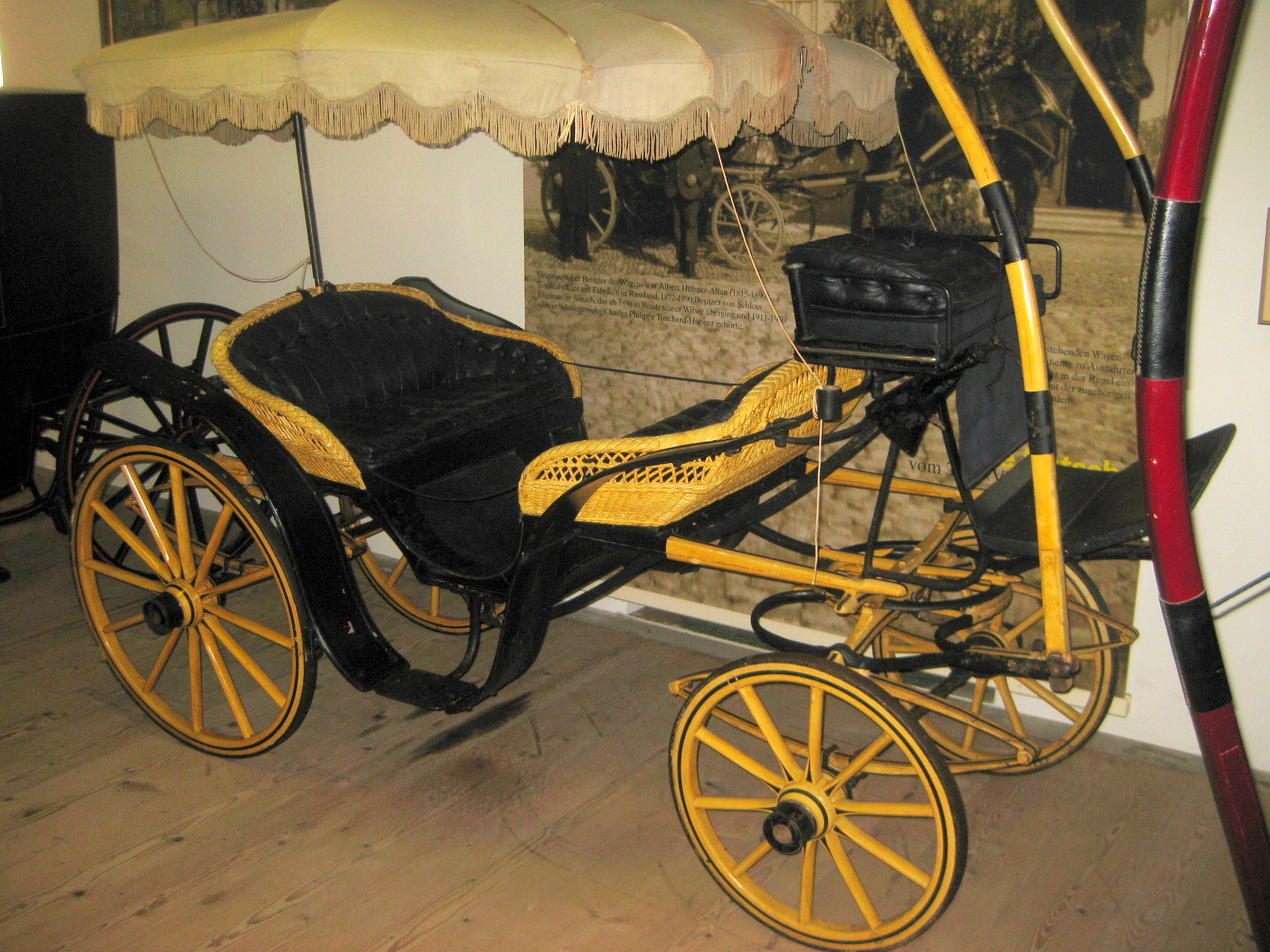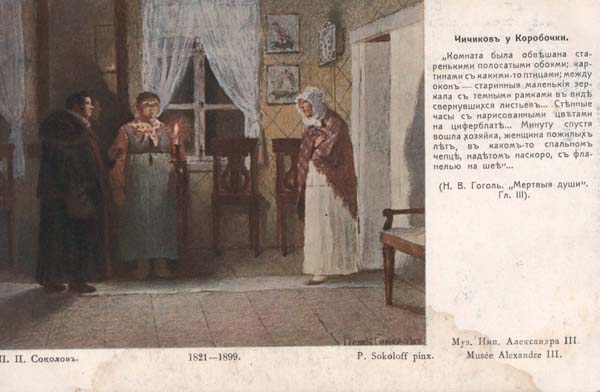|
Barouche
A barouche is a large, open, four-wheeled carriage, both heavy and luxurious, drawn by two horses. It was fashionable throughout the 19th century. Its body provides seats for four passengers, two back-seat passengers Vis-à-vis (carriage), vis-à-vis two behind the coachman's high box-seat. A leather roof can be raised to give back-seat passengers some protection from the weather. Etymology ''Barouche'' is an anglicisation of the German language, German word ''barutsche'', via the Italian language, Italian ''baroccio'' or ''biroccio'' and ultimately from the ancient Roman Empire's Latin language, Latin ''birotus'', "two-wheeled". The name thus became a misnomer, as the later form of the carriage had four wheels. Development and variations The barouche was based on an earlier style of carriage, the ''calash'' or ''calèche'': this was a light carriage with small wheels, inside seats for four passengers, a separate driver's seat and a folding top. A folding calash top was a fea ... [...More Info...] [...Related Items...] OR: [Wikipedia] [Google] [Baidu] |
Barouche-sociable
A sociable (short for ''sociable coach'') or barouche-sociable is an open, four-wheeled carriage described as a cross between a barouche and a Victoria (carriage), victoria, having two double seats facing each other. It might be controlled from the interior by an owner-driver or have a box for a coachman. A pair of folding hoods protect the passengers. The carriage is drawn by either a single horse in Horse harness, shafts or a matching pair in pole gear. The Balmoral Sociable is a carriage of the Royal Mews (so named because its interior is lined with Balmoral tartan); it is still used on occasion. See also Barouche References External links Seabrook Coaching Stable Dispersal Auction: Sociable or Double VictoriaCarriage Association of America (official site); illustrated. Sources * ''Discovering Horse-drawn Vehicles'', D. J. Smith, Shire Publications 1994 Carriages {{vehicle-stub ... [...More Info...] [...Related Items...] OR: [Wikipedia] [Google] [Baidu] |
Vis-à-vis (carriage)
A vis-à-vis is a carriage in which the passengers sit face to face with the front passengers facing rearward and the rear passengers facing forward. The term comes from the French ''vis-à-vis'', meaning face to face. These carriages are still commonly made by Amish carriage makers in the midwestern United States. Also in the Western world, the vis-a-vis is the most common type of carriage style used to cart tourists and leisure seekers in downtown urban settings. Passengers sit back-to-back on dos-à-dos carriages. Examples The following types of carriage had vis-à-vis seating: * Barouche * Berline * Landau Automobiles There were vis-à-vis automobiles in the early history of motoring. These were driven from the forward-facing rear seat, with front passengers sitting ahead of the steering controls and facing the driver. , page=484 Passengers in the front seat would obstruct the vision of the driver in the rear seat, and the style fell out of favour before 1905. See ... [...More Info...] [...Related Items...] OR: [Wikipedia] [Google] [Baidu] |
Landau (carriage)
A landau (pronounced ''LAN-dow'') is a four-wheeled carriage with a cover that can be let down. It was a luxury carriage. The low shell of the landau provides maximal visibility of the occupants and their clothing, a feature that makes a landau a popular choice for ceremonial occasions. History of landau carriages A landau is lightweight and suspended on elliptical springs. It was invented in the 18th century; ''landau'' in this sense is first noted in English in 1743. It was named after the German city of Landau in the Palatinate region, Rhenish Palatinate where they were first produced. In the 1830s, Luke Hopkinson, a celebrated coach-maker in Holborn, introduced the Briska Landau, which led to subsequent improvements to the popular landau. Description and development A landau, drawn by a pair or Four-in-hand (carriage), four-in-hand, is one of several kinds of Vis-à-vis (carriage), vis-à-vis, a social carriage with facing seats over a dropped footwell (''illustration'' ... [...More Info...] [...Related Items...] OR: [Wikipedia] [Google] [Baidu] |
Jane Austen
Jane Austen ( ; 16 December 1775 – 18 July 1817) was an English novelist known primarily for #List of works, her six novels, which implicitly interpret, critique, and comment on the English landed gentry at the end of the 18th century. Austen's plots often explore the dependence of women on marriage for the pursuit of favourable social standing and economic security. Her works are implicit critiques of the sentimental novel, novels of sensibility of the second half of the 18th century and are part of the transition to 19th-century literary realism. Her use of social commentary, realism, wit, and irony have earned her acclaim amongst critics and scholars. Austen wrote major novels before the age of 22, but she was not published until she was 35. The anonymously published ''Sense and Sensibility'' (1811), ''Pride and Prejudice'' (1813), ''Mansfield Park'' (1814), and ''Emma (novel), Emma'' (1816) were modest successes, but they brought her little fame in her lifetime. ... [...More Info...] [...Related Items...] OR: [Wikipedia] [Google] [Baidu] |
Carriages
A carriage is a two- or four-wheeled horse-drawn vehicle for passengers. In Europe they were a common mode of transport for the wealthy during the Roman Empire, and then again from around 1600 until they were replaced by the motor car around 1900. They were generally owned by the rich, but second-hand private carriages became common public transport, the equivalent of modern cars used as taxis. Carriage suspensions are by leather strapping or, on those made in recent centuries, steel springs. There are numerous names for different types. Two-wheeled carriages are usually owner-driven. Coaches are a special category within carriages. They are carriages with four corner posts and a fixed roof. Two-wheeled war chariots and transport vehicles such as four-wheeled wagons and two-wheeled carts were forerunners of carriages. In the 21st century, horse-drawn carriages are occasionally used for public parades by royalty and for traditional formal ceremonies. Simplified modern versio ... [...More Info...] [...Related Items...] OR: [Wikipedia] [Google] [Baidu] |
Steering Undercarriage
Turning radius was a longstanding problem with wagons, dictated by the distance between the front wagon wheels and the bed of the wagon—namely, the point where the rotating wheels collide with the side of the wagon when turning. Many earlier designs required a very large turning radius; however, shrinking the width of the bed means decreasing the size of the load. As this is a problem that carts (by virtue of their two-wheeled nature) do not face, this factor, combined with their lighter weight, meant that carts were long preferred over wagons for many uses. The general solutions to this problem involved several modifications to the front-axle assembly. The front axle assembly of a wagon consists of an axle, a pair of wheels and a round plate with a kingpin in its centre that sits halfway between the wheels, which may be mounted on spindles. A round plate with a hole in its centre is located on the underside of the wagon. The plate on the wagon, in turn, sits on the plate on th ... [...More Info...] [...Related Items...] OR: [Wikipedia] [Google] [Baidu] |
Nedelišće
Nedelišće (; Kajkavian language, Kajkavian: ''Nedelišče'') is a village in Međimurje County, in northern Croatia, and the seat of the Municipalities of Croatia, Municipality of Nedelišće, which also includes 10 other villages in the south-western part of Međimurje County. Nedelišće itself is a suburban village located just outside the county seat, Čakovec, around 3 kilometres from the city's centre. Despite not being designated as either a city or a town, Nedelišće was the third most populated Settlement (Croatia), settlement in Međimurje County, after Čakovec and Prelog, Croatia, Prelog, with 4,320 inhabitants according to the 2011 census. History Nedelišće was first mentioned in 1226, in the Donation of the Hungarian King Béla IV. The settlement was named after Sunday (, local Kajkavian dialect: ''nedelja'' or ''nedela''), since the local people worship The Holy Trinity to which their Catholic Church, Catholic parish is dedicated. In the Middle Ages, the pl ... [...More Info...] [...Related Items...] OR: [Wikipedia] [Google] [Baidu] |
Dead Souls
''Dead Souls'' ( , pre-reform spelling: ) is a novel by Nikolai Gogol, first published in 1842, and widely regarded as an exemplar of 19th-century Russian literature. The novel chronicles the travels and adventures of Pavel Ivanovich Chichikov and the people whom he encounters. These people typify the Russian middle aristocracy of the time. Gogol himself saw his work as an "epic poem in prose", and within the book characterised it as a "poem in prose". Gogol intended the novel to be the first part of a three-volume work, but burned the manuscript of the second part shortly before his death. Modern editions of ''Dead Souls'' include what survives from Part Two, as reconstructed by editors from Gogol's notebooks. Although the novel ends in mid-sentence (like Sterne's ''Sentimental Journey''), it is regarded by some as complete in the extant form. Characterization The original title, as shown on the illustration (cover page), was "The Wanderings of Chichikov, or Dead Souls. ''Po ... [...More Info...] [...Related Items...] OR: [Wikipedia] [Google] [Baidu] |
Nikolai Gogol
Nikolai Vasilyevich Gogol; ; (; () was a Russian novelist, short story writer, and playwright of Ukrainian origin. Gogol used the Grotesque#In literature, grotesque in his writings, for example, in his works "The Nose (Gogol short story), The Nose", "Viy (story), Viy", "The Overcoat", and "Nevsky Prospekt (story), Nevsky Prospekt". These stories, and others such as "Diary of a Madman (Nikolai Gogol), Diary of a Madman", have also been noted for their Proto-Surrealism, proto-surrealist qualities. According to Viktor Shklovsky, Gogol used the technique of defamiliarization when a writer presents common things in an unfamiliar or strange way so that the reader can gain new perspectives and see the world differently. His early works, such as ''Evenings on a Farm Near Dikanka'', were influenced by his Ukrainian upbringing, Ukrainian culture and Ukrainian folklore, folklore. His later writing satirised political corruption in contemporary Russian Empire, Russia (''The Government I ... [...More Info...] [...Related Items...] OR: [Wikipedia] [Google] [Baidu] |
Louisa May Alcott
Louisa May Alcott (; November 29, 1832March 6, 1888) was an American novelist, short story writer, and poet best known for writing the novel ''Little Women'' (1868) and its sequels ''Good Wives'' (1869), ''Little Men'' (1871), and ''Jo's Boys'' (1886). Raised in New England by her Transcendentalism, transcendentalist parents, Abigail May and Amos Bronson Alcott, she grew up among many well-known intellectuals of the day, including Margaret Fuller, Ralph Waldo Emerson, Nathaniel Hawthorne, and Henry David Thoreau. Encouraged by her family, Louisa began writing from an early age. Louisa's family experienced financial hardship, and while Louisa took on various jobs to help support the family from an early age, she also sought to earn money by writing. In the 1860s she began to achieve critical success for her writing with the publication of ''Hospital Sketches'', a book based on her service as a nurse in the American Civil War. Early in her career, she sometimes used pen names such ... [...More Info...] [...Related Items...] OR: [Wikipedia] [Google] [Baidu] |
Little Women
''Little Women'' is a coming-of-age novel written by American novelist Louisa May Alcott, originally published in two volumes, in 1868 and 1869. The story follows the lives of the four March sisters— Meg, Jo, Beth, and Amy—and details their passage from childhood to womanhood. Loosely based on the lives of the author and her three sisters, it is classified as an autobiographical or semi-autobiographical novel. ''Little Women'' was an immediate commercial and critical success, and readers were eager for more about the characters. Alcott quickly completed a second volume (titled ''Good Wives'' in the United Kingdom, though the name originated with the publisher and not Alcott). It was also met with success. The two volumes were issued in 1880 as a single novel titled ''Little Women''. Alcott subsequently wrote two sequels to her popular work, both also featuring the March sisters: '' Little Men'' (1871) and '' Jo's Boys'' (1886). The novel has been said to address three ma ... [...More Info...] [...Related Items...] OR: [Wikipedia] [Google] [Baidu] |




